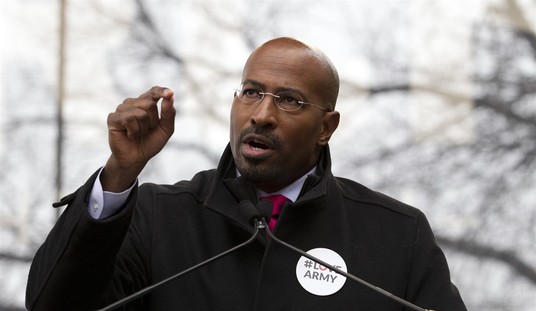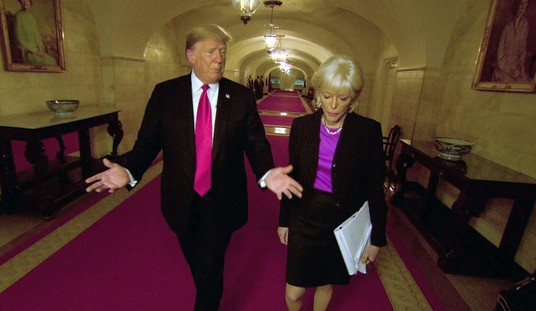Commentary: Restart from Shanghai: More pragmatism and rationality needed for China-U.S. trade talk
The headline above appeared yesterday morning before President Trump announced the implementation of new tariffs on imports from China. The headline from China’s state media outlet Xinhua News Agency was just the beginning. The condensing language was marbled throughout the article.
There were hints of agricultural purchases, but only as much as needed from domestic demand. The piece was very insulting to American negotiators and the administration.
You could almost see the finger-wagging with the use of words:
- Patience & Perseverance
- Political Wisdom
- Equality & Mutual Respect
- Goodwill & Sincerity
Starting from Shanghai, we should also recognize the twists and turns on the road to future consultations. It will take a long time to thaw the ice of estrangement. The pressure and noise from some on the U.S. side has shown from time to time that it is bound to be a difficult process from consensus in principle to agreement. It will take more time, patience and perseverance to journey down the road of future consultations, and it will also test the political wisdom of both sides.
Favoring forward thinking, China and the United States should seize the opportunity to implement the important consensus reached at the Osaka meeting of the two heads of state through concrete actions. If we want to continue the talks, we must honor and keep our promises. This is the responsibility of great powers.
We should also adhere to principles and the bottom line, and both sides should act toward each other on the basis of equality and mutual respect and take good care of each other's core concerns.
During this round of consultations, the two sides discussed the fact that China has increased its procurement of agricultural products from the United States in accordance with domestic needs and that the United States will create favorable conditions for the procurement, which is a signal of further goodwill and sincerity.
Recommended
The bottom line is China continues to play games, and President Trump called them out on it in the only way they respect. Sadly, a few soybean purchases and slowing but not stopping the fentanyl trade could have elicited all the stuff in the article. Instead, we are looking at the third round of tariffs to go into effect on September 1, 2019.
Maybe China misread the Trump administration, perhaps thinking big business globalist organizations such as the Chamber of Commerce and Business Roundtable had successfully done their bidding. Moreover, there’s the notion that China’s communist leaders are trying to run out the clock and see if a Democrat wins next November.
That’s a much more dangerous gambit than the alternative of simply stepping up and offering an olive branch. China’s economy is swaying. While they can print money and pile on even more debt, their leaders must have crunched the numbers enough to realize their goals, whether it’s ten years or one hundred years, are being pushed out further.
The supercilious nature of the article did more than wrangle the administration; it took the battle deeper into an abyss.
The Next Round
The next round of tariffs will hit consumers more directly than those already in place, but it won’t sink our economy.
Tariff History:
Round One: July 6, 2018: came in two tranches 25% on $34.0 billion and 25% on $16.0 billion.
Round Two: September 24, 2018: 10% on $200.0 billion in imports.
Round Three: September 1, 2019: 10% on $300.0 billion of imports. These will be applied to hundreds of items, including those L.O.L. Surprise! O.M.G. Neonlicious Fashion Dolls that my granddaughter loves.
The price of these goods will not go up 10%, as the real cost will be spread throughout the system beginning with adjustments and subsidies for China exports.
No one likes tariffs. It’s the only weapon President Trump has. Don’t let those that had a chance and failed to try to convince you otherwise. No, it would have been a mistake to try and put together a coalition of the willing and ask France and Germany to take a stand with America. Both nations are too intrigued by China’s Silk Road money to do more than convince China in a series of meetings.
Talk about waiting out the President.
These countries are considering a different banking system to get around U.S. sanctions on Iran. There is no way they can stand up to China. Perhaps China will drop the condescending language and make some kind of honest deal.
Tale of Two Sessions
The Dow Jones Industrial Average soared after manufacturing data augured for more rate cuts, and then the Trump tweet on new tariffs turned everything around.
Bond yields swooned with the 10-year yield, tumbling 14 basis points (bps) to 1.894, the lowest level since Nov 8, 2016. Yep, that’s the day before candidate Trump was catapulted into the White House. There are so many theories about what this all means, many of which are in conflict. One thing is for sure: this makes stocks in general even more attractive.
As for the Fed, they must cut again for all the reasons Jay Powell mentioned on Wednesday.
- Low Inflation
- Global Economy
- Trade Battle
Energy and Financials were lagging, even when the Dow was up 300 points, and then dived even more afterward. Energy plunged on poor earnings from a Permian Basin stalwart, and big banks tumbled on the prospects of lower rates.
Tale of Two Sessions | 1:30 PM | 4:00 PM |
S&P 500 Index | +0.95% | -0.90% |
Communication Services (XLC) | +1.22% | -0.47% |
Consumer Discretionary (XLY) | +1.02% | -1.36% |
Consumer Staples (XLP) | +1.02% | -0.35% |
Energy (XLE) | -0.75% | -2.26% |
Financials (XLF) | -0.14% | -2.27% |
Health Care (XLV) | +1.13% | +0.13% |
Industrials (XLI) | +0.35% | -1.94% |
Materials (XLB) | +1.27% | -0.57% |
Real Estate (XLRE) | +1.08% | +0.24% |
Technology (XLK) | +2.07% | -0.51% |
Utilities (XLU) | +1.10% | +1.02% |
The sector to watch today is the S&P Retail Exchange-Traded Fund (ETF), where the new tariffs will have the largest impact. The ETF has struggled, as the shakeout in brick-and-mortar retail has taken a serious toll.
Portfolio
Communication Services | Consumer Discretionary | Consumer Staples |
1 | 3 | 1 |
Energy | Financials | Healthcare |
1 | 2 | 1 |
Industrial | Materials | Real Estate |
2 | 3 | 1 |
Technology | Utilities | Cash |
3 | 0 | 2 |
It’s all about the jobs report this morning. Buckle Up, But Do Not Panic.
Today’s Session
July added 164,000 nonfarm jobs, of which 148,000 was in the private sector. However, May and June were revised lower, -10,000 to 72,000 and -31,000 to 193,000, respectively. The 3-month average is 140,000 jobs.
Nonfarm payroll
The unemployment rate remained steady at 3.7%.
Labor force participation was 63% from 62.9%. Notable gains were in professional and technical services +31k, health care +30k, social assistance +20k, and financial activities +18k.
Mining jobs declined by 5k. Manufacturing was flat both monthly, adding +16k jobs, and for the year. However, in 2018, the average was 22,000 jobs. The real area of concern was the reduction in average workweek in manufacturing, down 0.3 hour to 40.4, the lowest level since November 2011. The overall average workweek in July for private nonfarm payrolls decreased 0.1 hours to 34.3.
The reaction in the futures was rather benign. However, there has been more chatter on tariffs, and the markets have been mixed, down, then up, and now down again. Speaking of trade, the U.S. trade deficit in June declined 0.3% to $55.2 billion due to a notable drop in exports of 2.1% to $206.3 billion, the lowest level since December, from a global economy that is slowing. The trade deficit remains a bit higher than 2018, but the good news is inflation adjusted exports of U.S. oil was at a record high as domestic production surged. Imports declined 1.7% to $261.5 billion.
The Dow and S&P are on pace for the worst week in two months, and Nasdaq could be headed that way. But it is early, and the markets can change on a dime.
























Join the conversation as a VIP Member